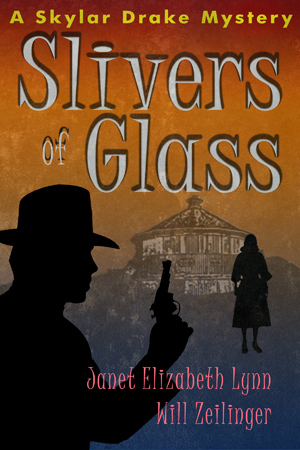Vintage 1960s Movies by E. J. Williams
April 9, 2022 by Janet Elizabeth Lynn and Will Zeilinger in category Partners in Crime by Janet Elizabeth Lynn & Will Zeilinger, Vintage 1960s Books tagged as movies, Musicals, the 1960s, The Sound of Music, writing research
The Sound of Music

The Sound of Music is a 1965 American musical drama film produced and directed by Robert Wise, and starred Julie Andrews and Christopher Plummer, with and Eleanor Parker. The film is an adaptation of the 1959 stage musical of the same name, composed by Richard Rodgers with lyrics by Oscar Hammerstein II.
The Story of the Trapp Family Singers by Maria von Trapp is the base of the movie. The musical tells the story of Maria, who takes a job as governess to a large Australian family while she decides whether to become a nun. She falls in love with the children and their widowed father, Captain von Trapp. With the onset of WWII, he is ordered to accept a commission in the German navy in spite of his opposition to the Nazis. He, Maria and decide to flee from Austria with the children.

The Sound of Music received five Academy Awards, including Best Picture and Best Director. The film also received two Golden Globe Awards, for Best Motion Picture and Best Actress, the Directors Guild of America Award for Outstanding Directorial Achievement, and the Writers Guild of America Award for Best Written American Musical. In 1998, the American Film Institute (AFI) listed The Sound of Music as the fifty-fifth greatest American movie of all time, and the fourth greatest movie musical. In 2001, the United States Library of Congress selected the film for preservation in the National Film Registry, finding it “culturally, historically, or aesthetically significant”.
An added note:
When setting up for filming of the wedding scene, there was nobody at the altar to wed them when they reached the top of the stairs to the sanctuary. Someone had forgotten to summon the actor playing the bishop. According to Dame Julie Andrews, the real Archbishop of Salzburg is seen in the movie.
Some of Janet Lynn’s and Will Zeilinger’s books

Published authors Will Zeilinger and Janet Lynn had been writing individually until they got together and wrote the Skylar Drake Mystery Series. These hard-boiled tales are based in old Hollywood of 1955. Janet has published seven mystery novels, and Will has three plus a couple of short stories. Their world travels have sparked several ideas for murder and crime stories. This creative couple is married and lives in Southern California.
Up the Down Staircase
February 3, 2022 by Janet Elizabeth Lynn and Will Zeilinger in category Partners in Crime by Janet Elizabeth Lynn & Will Zeilinger, Vintage 1960s Books tagged as 1960s, new series, setting the stage, writing research
UP THE DOWN STAIRCASE
Bel Kaufmann
published in 1964
Prentice-Hall
Genre: Fiction, Drama
An instant bestseller when it was first published in 1964, Up the Down Staircase remains as poignant, devastating, laugh-out-loud funny, and relevant today as ever. It timelessly depicts a beleaguered public school system redeemed by teachers who love to teach and students who long to be recognized.
Vintage Inspired by the Jet Age–Tail Fins
April 3, 2021 by Janet Elizabeth Lynn and Will Zeilinger in category Partners in Crime by Janet Elizabeth Lynn & Will Zeilinger tagged as cars, E.J. Williams, Jet Age, Tail fins, Vintage, writing research
Tail Fins

If you happen to be of a certain age, you will remember tail fins on the cars from your childhood.
Although most people think the trend of having tail fins on cars lasted approximately from 1955 to 1965, the first subtle appearances of tail fins began in the late ’40s. What started as a small chrome trim piece on a tail light, or a subtle fin of a few inches in length.
Growing in size each year until they (literally) peaked in 1959. American cars were not unique in this fad. By the early ’60s, the appeal began to wane. With a few exceptions, by 1965, they had disappeared from the automotive landscape.
A Little History

General Motors and Chrysler deserve the credit with starting the finny “arms race.” Harley Earl and Bill Mitchell at GM and Virgil Exner at Chrysler attempted to wow the public with each new model year by introducing the most outlandish fins on their vehicles. Ford was in the mix too. Remember, the original Thunderbird also employed design elements that took their cues from jet aircraft. This trend carried through to the 1963 model year. The full-sized Ford lost its fins by 1962.

Even European automotive designers got into the act. French Italian designers have always been avant-garde, but even the British and Germans, who tend to be more conservative, slapped fins on some of their cars.
And the Winner Is…
The ultimate fins of the era belonged to the 1959 Cadillac El Dorado Biarritz. The eye-popping red paint job and fins that look like they could impale someone made this car unmistakeable…Even today.

Writing the Private Investigator
March 17, 2021 by marianne h donley in category Ages 2 Perfection Online Class, Online Classes tagged as A2P Online Class, PIs, Private Investigator, writing research
Presented by: Steve Pease
Date: April 1 – 30, 2021
Pricing: A2P Member fee: $15
Non-A2P Member fee: $30
About the Workshop:
Television and movies do not reflect real life. Surprised? The Private Eye’s image in the mind of most Americans (and elsewhere) was formed on the screen and in pulpy mystery novels, and it’s mostly wrong. We don’t pull guns, beat up thugs, drink whiskey with a straw or take dirty photos thru motel Venetian blinds. We’re in a tough business, and we need insurance, permits, equipment and coffee. Oh, and good shoes and a comfy chair.
This 12 Lesson course will present a very practical view of the single-person PI business based on my experience as a licensed PI2 in Colorado. I’ll cover the main duties of the investigator, the effort needed to run a sustaining business and a few anecdotes to illustrate points. I’ll recommend resources, steer you away from a few, and suggest a couple things you can do to experience the PI life, AND, get some real-life details into your stories.
So your Hero is over 35, and maybe over 55. And they want to make a career change? What the hell do they bring to this? EXPERIENCE. And maturity from those hard lessons earned and learned during a working life. The punk kid hasn’t learned yet. You have. Most PIs aren’t life-long PIs, but they have been curious forever. Most have done something else, reporter, librarian, civil servant, cop, military, nurses. Their minds have discipline. They’ve been people watchers. They know an opportunity when they see it, so here they go. And they will succeed at THE core PI task: Find Out About. My Lessons aren’t simple Conference handouts. They’re writing resources. You can lurk. And you can imagine and ask. My two main mystery characters are late life PIs. Let’s see how this works.
About the Presenter:
Steve Pease is a licensed Private Investigator in Colorado. He is retired from a career in Intelligence and space engineering. He also teaches a course in writing against the intelligence cliché. He has published military history and SF/mystery/horror fiction as Michael Chandos. He is working on a romantic-suspense novel featuring an elegant lady who runs a lacey tea shop – and who knocked off her abusive husband with some lethal tea and put him in the rose bed.
0 0 Read moreThe Demise of the Little Nash Metropolitan
June 3, 2020 by Janet Elizabeth Lynn and Will Zeilinger in category Partners in Crime by Janet Elizabeth Lynn & Will Zeilinger, Writing tagged as 1960s, Nash Metropolitian, sub-compact car, writing research
The Little Nash Metropolitan
After World War II, the American public wanted new cars, not rehashed models from before production halted in 1942 for national emergency production. As a result, U.S. carmakers offered products in all price ranges.
Returning GIs started families, the suburbs grew at an unprecedented rate and peaked in the 1960s. Many growing families had moved away from the cities and needed economical ways to commute to their jobs in the cities.
Enter, the American-designed and British-built, Nash Metropolitan measured less than thirteen feet in length, and was often called America’s first sub-compact car. Production began in October 1953. Over the next eight years, over 95,000 Metropolitans were produced and sold by Nash/Hudson, then Rambler, and finally AMC.
The Second Car
They designed it as a second car in a two-car family, for Mom taking the kids to school or shopping, or for Dad to drive to the railroad station to ride to work. A commuter/shopping car with a resemblance to the big Nash, but the scale was tiny. The Metropolitan’s wheelbase was shorter than the Volkswagen Beetle.
The miniscule two-seater came as convertible or hardtop models. No extra-cost, standard features (optional on most cars of that time) included electric windshield wipers, cigarette lighter, interior map light, and a continental-type rear-mounted spare tire with cover. While an AM radio, heater, and whitewall tires were listed as optional extras, it appeared all Metros left the factory with these items. Trunk space was accessed by folding the seatback forward.
In December 1956, the Austin Motor Company of Britain acquired the rights to sell the Metropolitan to non-North American markets. Modifications allowed manufacture of both left and right-hand drive models.
Several more changes came in 1959, including a glove box door, seat adjusters, vent windows, opening trunk lid and tubeless tires. The last Metropolitans came with a British-made 55 hp Austin engine.
Production of the funny little car stopped in 1960, but ‘leftovers’ were sold for under $1700 for another two years.
In popular culture, “The Little Nash Rambler” song was released in 1958 and often thought to refer to this teeny car. It was actually based on the larger, four-seat, Nash Rambler.
With the 1960s, came the birth of “muscle cars”, cheap gasoline and the need for speed. National pastimes included drag racing, and a return to NASCAR racing.
While some manufacturers offered one or two “economy” models like the Chevrolet Corvair and Ford Falcon, the little Metropolitan had no future. It faded into memory and became a curiosity for collectors.
Hollywood did not forget. The little car can be seen in: Clueless (1995), The Wedding Singer (1998), Blue Hawaii (1961) and others. It made many TV appearances, including Starsky & Hutch, The Ghost Whisperer, Square Pegs, and even The Simpsons!
The Little Nash Rambler
(Because I Couldn’t Resist)
Affiliate Links
A Slice of Orange is an affiliate with some of the booksellers listed on this website, including Barnes & Nobel, Books A Million, iBooks, Kobo, and Smashwords. This means A Slice of Orange may earn a small advertising fee from sales made through the links used on this website. There are reminders of these affiliate links on the pages for individual books.
Search A Slice of Orange
Find a Column
Archives
Featured Books
STOLEN KISSES FROM THE VISCOUNT
Desperate times call for drastic measures…
More info →COME FLY WITH ME
London’s Heathrow airport
New Year’s Eve
Kacie Bennett is stranded in London and desperate to get home to avert a family crisis. She’s shocked when a tall, dark handsome stranger offers her a first class airline ticket, no strings attached.
More info →RESCUED BY A RANCHER
What Happens When A Texas Sweetheart Is Born With A Silver Spoon? She Stirs Up Trouble In Hope Valley!
More info →SLIVERS OF GLASS
Southern California 1955: the summer Disneyland opened, but even "The Happiest Place on Earth" couldn't hide the smell of dirty cops, corruption and murder.
More info →Newsletter
Contributing Authors
Search A Slice of Orange
Find a Column
Archives
Authors in the Bookstore
- A. E. Decker
- A. J. Scudiere
- A.J. Sidransky
- Abby Collette
- Alanna Lucus
- Albert Marrin
- Alice Duncan
- Alina K. Field
- Alison Green Myers
- Andi Lawrencovna
- Andrew C Raiford
- Angela Pryce
- Aviva Vaughn
- Barbara Ankrum
- Bethlehem Writers Group, LLC
- Carol L. Wright
- Celeste Barclay
- Christina Alexandra
- Christopher D. Ochs
- Claire Davon
- Claire Naden
- Courtnee Turner Hoyle
- Courtney Annicchiarico
- D. Lieber
- Daniel V. Meier Jr.
- Debra Dixon
- Debra H. Goldstein
- Debra Holland
- Dee Ann Palmer
- Denise M. Colby
- Diane Benefiel
- Diane Sismour
- Dianna Sinovic
- DT Krippene
- E.B. Dawson
- Emilie Dallaire
- Emily Brightwell
- Emily PW Murphy
- Fae Rowen
- Faith L. Justice
- Frances Amati
- Geralyn Corcillo
- Glynnis Campbell
- Greg Jolley
- H. O. Charles
- Jaclyn Roché
- Jacqueline Diamond
- Janet Lynn and Will Zeilinger
- Jaya Mehta
- Jeannine Atkins
- Jeff Baird
- Jenna Barwin
- Jenne Kern
- Jennifer D. Bokal
- Jennifer Lyon
- Jerome W. McFadden
- Jill Piscitello
- Jina Bacarr
- Jo A. Hiestand
- Jodi Bogert
- Jolina Petersheim
- Jonathan Maberry
- Joy Allyson
- Judy Duarte
- Justin Murphy
- Justine Davis
- Kat Martin
- Kidd Wadsworth
- Kitty Bucholtz
- Kristy Tate
- Larry Deibert
- Larry Hamilton
- Laura Drake
- Laurie Stevens
- Leslie Knowles
- Li-Ying Lundquist
- Linda Carroll-Bradd
- Linda Lappin
- Linda McLaughlin
- Linda O. Johnston
- Lisa Preston
- Lolo Paige
- Loran Holt
- Lynette M. Burrows
- Lyssa Kay Adams
- Madeline Ash
- Margarita Engle
- Marguerite Quantaine
- Marianne H. Donley
- Mary Castillo
- Maureen Klovers
- Megan Haskell
- Melanie Waterbury
- Melisa Rivero
- Melissa Chambers
- Melodie Winawer
- Meriam Wilhelm
- Mikel J. Wilson
- Mindy Neff
- Monica McCabe
- Nancy Brashear
- Neetu Malik
- Nikki Prince
- Once Upon Anthologies
- Paula Gail Benson
- Penny Reid
- Peter Barbour
- Priscilla Oliveras
- R. H. Kohno
- Rachel Hailey
- Ralph Hieb
- Ramcy Diek
- Ransom Stephens
- Rebecca Forster
- Renae Wrich
- Roxy Matthews
- Ryder Hunte Clancy
- Sally Paradysz
- Sheila Colón-Bagley
- Simone de Muñoz
- Sophie Barnes
- Susan Kaye Quinn
- Susan Lynn Meyer
- Susan Squires
- T. D. Fox
- Tara C. Allred
- Tara Lain
- Tari Lynn Jewett
- Terri Osburn
- Tracy Reed
- Vera Jane Cook
- Vicki Crum
- Writing Something Romantic
Affiliate Links
A Slice of Orange is an affiliate with some of the booksellers listed on this website, including Barnes & Nobel, Books A Million, iBooks, Kobo, and Smashwords. This means A Slice of Orange may earn a small advertising fee from sales made through the links used on this website. There are reminders of these affiliate links on the pages for individual books.






























































